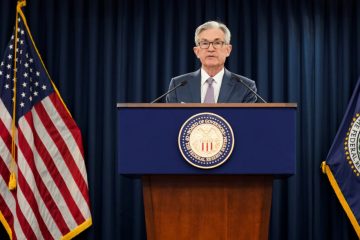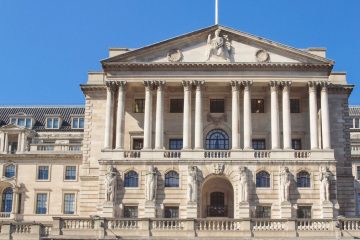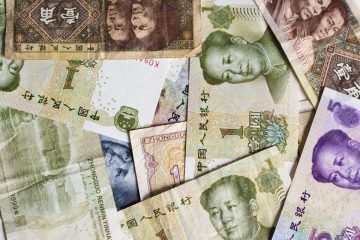Dollar falls to nine-month low as Powell notes progress in disinflation

The dollar extended losses on Wednesday and fell to a nine-month low against a basket of currencies after Federal Reserve Chair Jerome Powell spoke of making progress in bringing down inflation pressures, even as the U.S. central bank warned of further monetary policy tightening.
Powell, speaking in a news conference after the Fed announced that it had hiked rates by a widely expected 25 basis points, said he is not fully sure where the central bank will stop with its increases to borrowing costs as it presses forward with its efforts to cool inflation.
He also noted progress on disinflation, which he said is in its early stages, and said the Fed will continue to make decisions on a meeting-by-meeting basis.
“The markets are pretty much intent that (Powell) sees inflation coming down, and it seems like he’s pretty confident that it’s going to continue,” said Edward Moya, senior market analyst at OANDA in New York.
“They have two more inflation reports going into the March meeting, and if we see pricing pressures continue to ease then they might fall short of their dot plots and only have to deliver one more rate hike,” Moya added. “This is good news for risky assets, good news for the euro and it’s taking the dollar to some of the lowest levels we’ve seen in several months.”
Investors have been pricing in a more dovish outlook than Fed officials have been signaling as they bet that tighter monetary conditions will dent growth and possibly send the U.S. economy into a recession, and in turn lead the U.S. central bank to pivot to rate cuts.
Fed funds futures traders expect the benchmark overnight interest rate to peak at 4.89% in June, before falling back to 4.39% by December. The Fed’s last “dot plot” in December showed that Fed officials expected the rate to rise above 5%.
Powell also indicated he is not worried about loosening financial conditions, saying the Fed’s focus is not on short-term moves, but on sustained changes to broader financial conditions.
The dollar fell as low as 101.03 against a basket of currencies, the lowest since April 22. The euro reached $1.10020, the highest since April 4. The greenback also fell against the yen to 128.55, the lowest since Jan. 20.
The ADP National Employment report on Wednesday showed that U.S. private payrolls rose by 106,000 jobs last month, far less than expected in January, hinting at some cooling in the labor market.
This week’s major U.S. economic focus will be the government’s jobs report for January on Friday, which is expected to show that employers added 185,000 jobs during the month.
“Hiring is slowing and the jobs market isn’t as hot as it was a year ago, but it’s not clear if its cooled down enough to halt wage inflation,” said Adam Button, chief currency analyst at ForexLive in Toronto.
Wages are expected to have increased by 0.3% in the month, for an annual gain of 4.3%.
The European Central Bank (ECB) and the Bank of England are both expected to raise interest rates by 50 basis points on Thursday.
Sterling gained 0.60% to $1.23910.









